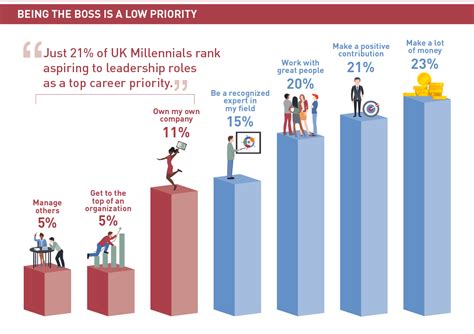
Surveillance pricing, a practice where companies leverage the vast amounts of data they collect about consumers to personalize prices, is increasingly under scrutiny for potentially leading to unfair or discriminatory pricing. This data-driven strategy allows businesses to charge individuals different amounts for the same products or services based on their perceived willingness to pay, raising concerns about transparency, equity, and the erosion of consumer trust.
Consumers may be unknowingly paying more for everyday goods and services as corporations use sophisticated data analysis to determine individual price sensitivities. This practice, termed “surveillance pricing,” involves companies tracking online behavior, purchase history, location data, and other personal information to predict how much a consumer is willing to spend. The result is a highly personalized pricing strategy that can lead to significant price variations for identical items, raising concerns about fairness and transparency.
According to a recent report, the extent of surveillance pricing is growing as data collection and analysis technologies become more sophisticated. “Corporations are using incredibly shady ways to charge you more,” says consumer advocate groups, highlighting the lack of transparency and the potential for exploitation. The article delves into how companies are employing these tactics and what consumers can do to protect themselves.
One key aspect of surveillance pricing is the use of dynamic pricing algorithms. These algorithms constantly adjust prices based on real-time data, such as demand, competitor pricing, and individual consumer profiles. While dynamic pricing is not inherently unethical, its application becomes problematic when it is used to exploit vulnerable consumers or discriminate against specific groups. For example, someone living in a wealthier neighborhood or consistently purchasing premium products might be charged a higher price than someone with a lower income or a history of bargain shopping.
The ethical implications of surveillance pricing are significant. Critics argue that it erodes consumer trust and creates an uneven playing field. When consumers are unaware that prices are being tailored to their individual profiles, they are less likely to shop around for better deals or negotiate prices. This lack of transparency can lead to a sense of powerlessness and resentment, ultimately damaging the relationship between businesses and their customers.
Furthermore, surveillance pricing raises concerns about potential discrimination. If pricing algorithms are based on factors such as race, ethnicity, or location, they could perpetuate existing inequalities. For instance, if a company charges higher prices to consumers in predominantly minority neighborhoods, it could be accused of discriminatory pricing practices, even if the algorithm is not explicitly designed to target those groups.
Examples of surveillance pricing are becoming increasingly common across various industries. Airlines and hotels have long used dynamic pricing to adjust fares and room rates based on demand and booking patterns. However, the practice is now extending to other sectors, such as e-commerce, retail, and even healthcare. Online retailers may show different prices to different customers based on their browsing history or location. Pharmacies, as well, may show prices based on individual’s location and medical history.
The lack of regulation surrounding surveillance pricing makes it difficult for consumers to challenge unfair pricing practices. In many jurisdictions, companies are not required to disclose how they determine prices or how they use personal data. This lack of transparency allows companies to operate with little accountability, making it harder for consumers to detect and protest against surveillance pricing.
To protect themselves from surveillance pricing, consumers can take several steps. First, they should be aware of the practice and understand how their data is being collected and used. This awareness can help them make more informed purchasing decisions and avoid being exploited. Second, consumers can use privacy tools, such as VPNs and ad blockers, to limit the amount of data that companies can collect about them. These tools can mask their IP address, block tracking cookies, and prevent companies from monitoring their online activity.
Third, consumers can clear their browser history and cookies regularly to prevent companies from using past data to personalize prices. They can also use private browsing modes, which do not save browsing history or cookies. Fourth, consumers should shop around for the best prices and compare offers from different retailers. This can help them identify instances of price discrimination and find better deals.
Fifth, consumers can support companies that prioritize transparency and ethical pricing practices. By choosing to do business with companies that are upfront about how they use data and determine prices, consumers can encourage other companies to adopt more ethical practices.
The future of surveillance pricing depends on how governments and regulatory bodies address the issue. Some jurisdictions are considering legislation to regulate the use of personal data and promote transparency in pricing practices. For example, the European Union’s General Data Protection Regulation (GDPR) sets strict rules on how companies can collect and use personal data, giving consumers more control over their information.
Similar regulations in other parts of the world could help to curb the excesses of surveillance pricing and protect consumers from unfair or discriminatory pricing practices. However, the challenge lies in finding a balance between protecting consumer rights and allowing businesses to innovate and compete.
Ultimately, the key to addressing surveillance pricing is greater transparency and accountability. Companies need to be more upfront about how they collect and use data, and consumers need to be empowered to make informed decisions about their privacy. By working together, governments, businesses, and consumers can create a fairer and more transparent marketplace where prices are based on objective factors, not on the manipulation of personal data. The rise of artificial intelligence (AI) also plays a crucial role in the increasing use of surveillance pricing, enabling businesses to analyze vast datasets with unprecedented speed and accuracy. AI algorithms can identify patterns and predict consumer behavior, allowing companies to personalize prices in real-time.
However, the use of AI in pricing also raises ethical concerns. If AI algorithms are biased or flawed, they could lead to discriminatory pricing practices that are difficult to detect and challenge. Therefore, it is essential to ensure that AI algorithms are transparent, accountable, and free from bias.
The long-term impact of surveillance pricing on the economy is uncertain. Some economists argue that it could lead to increased efficiency and lower prices overall, as companies are able to better match supply and demand. However, others worry that it could exacerbate inequalities and erode consumer trust, leading to a decline in economic activity.
The debate over surveillance pricing is likely to continue as data collection and analysis technologies become more sophisticated. However, by raising awareness, promoting transparency, and advocating for stronger regulations, consumers can play a role in shaping the future of pricing practices and ensuring a fairer and more equitable marketplace.
Frequently Asked Questions (FAQs) Regarding Surveillance Pricing
-
What is surveillance pricing?
Surveillance pricing is a practice where companies use the vast amounts of data they collect about consumers to personalize prices. This data can include online behavior, purchase history, location data, and other personal information. By analyzing this data, companies can predict how much a consumer is willing to spend and charge them accordingly. The result is that different consumers may pay different prices for the same products or services. As consumer advocate groups cite, “Corporations are using incredibly shady ways to charge you more.”
-
How does surveillance pricing work?
Surveillance pricing typically involves the use of dynamic pricing algorithms that constantly adjust prices based on real-time data. These algorithms consider factors such as demand, competitor pricing, and individual consumer profiles. For example, someone who consistently purchases premium products or lives in a wealthier neighborhood might be charged a higher price than someone with a lower income or a history of bargain shopping. Companies use cookies, tracking pixels, and other technologies to collect data about consumers’ online activity, which is then used to personalize prices.
-
Is surveillance pricing legal?
The legality of surveillance pricing varies depending on the jurisdiction. In many places, there are no specific laws that prohibit the practice, as long as it does not violate anti-discrimination laws. However, some jurisdictions are considering legislation to regulate the use of personal data and promote transparency in pricing practices. The European Union’s General Data Protection Regulation (GDPR) sets strict rules on how companies can collect and use personal data, which can impact surveillance pricing. The key issue is whether consumers are informed about how their data is being used and whether they have the ability to opt out.
-
How can I protect myself from surveillance pricing?
There are several steps you can take to protect yourself from surveillance pricing:
- Be Aware: Understand how your data is being collected and used.
- Use Privacy Tools: Use VPNs and ad blockers to limit data collection.
- Clear Browser History: Regularly clear your browser history and cookies.
- Use Private Browsing: Use private browsing modes to avoid saving browsing history.
- Shop Around: Compare prices from different retailers to find the best deals.
- Support Ethical Companies: Choose to do business with companies that prioritize transparency.
-
What are the ethical concerns surrounding surveillance pricing?
The ethical concerns surrounding surveillance pricing are significant. Critics argue that it erodes consumer trust and creates an uneven playing field. When consumers are unaware that prices are being tailored to their individual profiles, they are less likely to shop around for better deals or negotiate prices. This lack of transparency can lead to a sense of powerlessness and resentment. Additionally, surveillance pricing raises concerns about potential discrimination, as pricing algorithms could perpetuate existing inequalities if they are based on factors such as race, ethnicity, or location. The lack of regulation and accountability also contributes to the ethical concerns.
Deep Dive and Extended Context
The core issue with surveillance pricing lies in the imbalance of information and power. Companies possess a wealth of data about consumers, enabling them to predict behavior and willingness to pay with increasing accuracy. Consumers, on the other hand, are often unaware of the extent of data collection and how it is being used to determine prices. This asymmetry creates an environment where consumers are vulnerable to exploitation.
The evolution of data collection methods has further exacerbated the problem. In the past, companies relied on relatively limited data sources, such as demographic information and purchase history. Today, they can track consumers’ online activity, location data, social media interactions, and even their biometric data. This vast amount of information allows companies to create highly detailed profiles of individual consumers and personalize prices accordingly.
The use of artificial intelligence (AI) in pricing adds another layer of complexity. AI algorithms can analyze vast datasets with unprecedented speed and accuracy, identifying patterns and predicting consumer behavior. However, the algorithms themselves can be opaque, making it difficult to understand how prices are being determined. This lack of transparency raises concerns about bias and fairness. If AI algorithms are trained on biased data, they could perpetuate existing inequalities and lead to discriminatory pricing practices.
The lack of clear regulations surrounding surveillance pricing makes it difficult for consumers to challenge unfair pricing practices. In many jurisdictions, companies are not required to disclose how they determine prices or how they use personal data. This lack of transparency allows companies to operate with little accountability, making it harder for consumers to detect and protest against surveillance pricing.
Some argue that surveillance pricing is simply a form of personalized marketing, where companies tailor their offers to individual consumers. However, the distinction lies in the intent and the impact. Personalized marketing aims to provide consumers with relevant and valuable offers, while surveillance pricing aims to extract the maximum amount of money from each consumer, regardless of their individual circumstances. The latter can lead to unfair or discriminatory pricing practices, particularly if it exploits vulnerable consumers or perpetuates existing inequalities.
The economic implications of surveillance pricing are also a subject of debate. Some economists argue that it could lead to increased efficiency and lower prices overall, as companies are able to better match supply and demand. By charging different prices to different consumers, companies can optimize their revenue and reduce waste. However, others worry that it could exacerbate inequalities and erode consumer trust, leading to a decline in economic activity. If consumers feel that they are being unfairly treated, they may be less likely to spend money, which could harm the economy.
The rise of the digital economy has created new opportunities for surveillance pricing. Online retailers, for example, can track consumers’ browsing history, search queries, and purchase behavior. This data allows them to personalize prices in real-time, offering different prices to different consumers based on their perceived willingness to pay. The use of cookies, tracking pixels, and other technologies makes it easy for companies to collect this data without consumers’ knowledge or consent.
The mobile economy has further expanded the scope of surveillance pricing. Mobile devices collect vast amounts of data about consumers, including their location, contacts, and app usage. This data can be used to personalize prices based on where consumers are located, who they are connected to, and what apps they use. For example, a ride-sharing company could charge higher prices to consumers who are in a hurry or who are traveling to a popular destination.
The healthcare industry is another area where surveillance pricing could have significant implications. Healthcare providers could use data about patients’ medical history, insurance coverage, and income to personalize prices for medical services. This could lead to disparities in access to healthcare, with wealthier patients receiving better care at lower prices than poorer patients. The ethical implications of such a scenario are profound.
To address the challenges of surveillance pricing, governments and regulatory bodies need to take action. One approach is to strengthen data privacy laws, giving consumers more control over their personal information. This could include requiring companies to obtain explicit consent before collecting and using personal data, as well as giving consumers the right to access, correct, and delete their data.
Another approach is to promote transparency in pricing practices. This could include requiring companies to disclose how they determine prices and how they use personal data. Companies could also be required to provide consumers with clear and understandable explanations of their pricing algorithms.
In addition, regulators could establish independent oversight bodies to monitor pricing practices and investigate complaints of unfair or discriminatory pricing. These bodies could have the power to impose fines and other penalties on companies that violate pricing regulations.
Consumers also have a role to play in addressing surveillance pricing. By becoming more aware of the practice and taking steps to protect their privacy, they can reduce their vulnerability to exploitation. This includes using privacy tools, shopping around for the best prices, and supporting companies that prioritize transparency.
The debate over surveillance pricing is likely to continue as data collection and analysis technologies become more sophisticated. However, by raising awareness, promoting transparency, and advocating for stronger regulations, consumers can play a role in shaping the future of pricing practices and ensuring a fairer and more equitable marketplace. The key is to strike a balance between innovation and consumer protection, allowing businesses to compete and thrive while ensuring that consumers are treated fairly and with respect.
Further Examples and Scenarios:
- E-commerce platforms: Consider an online retailer selling electronics. A customer who frequently purchases the latest gadgets and accessories, and who has a history of not abandoning their cart despite slightly higher prices, might be shown a higher price for a new smartphone compared to a customer who typically buys discounted items and compares prices extensively across multiple websites. This difference isn’t based on the cost of the product or any explicit discount, but solely on the predicted willingness to pay.
- Subscription services: A streaming service might offer different introductory rates or renewal prices based on a user’s viewing habits and demographic data. Someone who watches a lot of premium content and has a higher income might be less likely to cancel their subscription, leading the service to offer them a less competitive renewal price compared to someone who watches primarily free content or has a lower income.
- Travel industry: Airlines and hotels have been pioneers in dynamic pricing, but surveillance pricing takes it a step further. Beyond simply adjusting prices based on demand and time of booking, they might also consider a customer’s travel history, loyalty program status, and even their location when they’re booking a flight or hotel room. A business traveler who consistently books last-minute flights might be charged a higher price than a leisure traveler who books well in advance.
- Financial services: Banks and insurance companies could potentially use surveillance pricing to offer different interest rates or insurance premiums based on a customer’s financial behavior and risk profile. Someone who frequently makes late payments or has a history of debt might be charged a higher interest rate on a loan or a higher premium for insurance.
- Retail stores: Even brick-and-mortar stores can engage in surveillance pricing through loyalty programs and mobile apps. By tracking customers’ purchase history and location within the store, retailers can offer personalized discounts or promotions that are designed to maximize sales. However, this could also lead to situations where different customers pay different prices for the same product, depending on their loyalty program status or their browsing history on the store’s app.
The Role of Regulation and Policy:
The implementation of effective regulations and policies is crucial to mitigate the negative impacts of surveillance pricing. Some key areas that regulators should focus on include:
- Data Privacy: Enacting strong data privacy laws that limit the collection and use of personal data, and give consumers more control over their information. This includes requiring companies to obtain explicit consent before collecting and using personal data, as well as giving consumers the right to access, correct, and delete their data. The GDPR in the European Union serves as a model for comprehensive data privacy regulation.
- Transparency: Requiring companies to be transparent about their pricing practices, including disclosing how they determine prices and how they use personal data. This could involve mandatory labeling of products and services to indicate when prices are personalized, as well as providing consumers with clear and understandable explanations of their pricing algorithms.
- Anti-Discrimination: Enforcing anti-discrimination laws to prevent companies from using surveillance pricing to discriminate against specific groups based on factors such as race, ethnicity, gender, or religion. This requires careful monitoring of pricing algorithms and data practices to identify and address any discriminatory patterns.
- Consumer Protection: Strengthening consumer protection laws to give consumers the right to challenge unfair pricing practices and seek redress if they have been harmed. This could include establishing independent oversight bodies to investigate complaints of unfair pricing and impose penalties on companies that violate pricing regulations.
- Education and Awareness: Educating consumers about surveillance pricing and how to protect themselves. This could involve public awareness campaigns, educational materials, and online resources that help consumers understand the risks and make informed decisions about their privacy.
The Importance of Ethical Business Practices:
While regulations and policies are essential, ethical business practices also play a crucial role in addressing surveillance pricing. Companies that prioritize transparency, fairness, and consumer trust are more likely to adopt responsible pricing practices that benefit both the company and its customers. Some key ethical considerations for businesses include:
- Transparency: Being upfront with customers about how prices are determined and how personal data is used.
- Fairness: Ensuring that prices are based on objective factors and that they do not unfairly discriminate against specific groups of consumers.
- Respect for Privacy: Minimizing the collection of personal data and respecting customers’ privacy preferences.
- Accountability: Taking responsibility for pricing practices and addressing customer complaints promptly and fairly.
- Long-Term Value: Focusing on building long-term relationships with customers based on trust and mutual benefit, rather than short-term profits.
By adopting ethical business practices, companies can build a stronger brand reputation, increase customer loyalty, and contribute to a more fair and equitable marketplace.
The future of surveillance pricing will depend on the choices made by governments, businesses, and consumers. By working together to promote transparency, fairness, and accountability, we can create a digital economy that benefits everyone, not just a select few. It is essential to recognize that data is a powerful tool, and like any tool, it can be used for good or for ill. The challenge is to ensure that data is used in a way that promotes the common good and respects the rights and dignity of all individuals.









